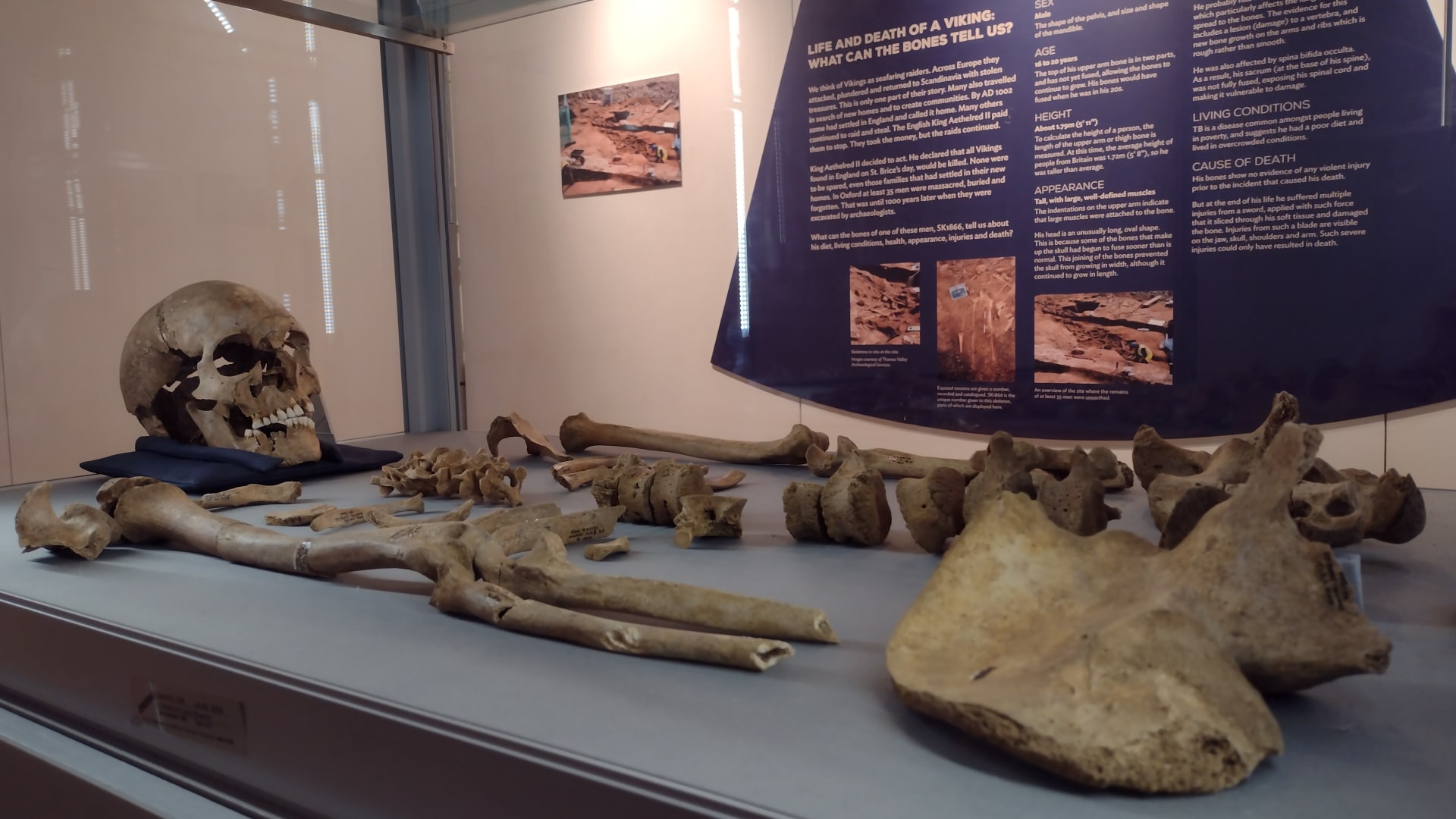The Oxfordshire Museum in Woodstock re-opened on 18th May with the intriguing ‘Skeleton Science ‘exhibition, bringing to life the work of bioarchaeologists as they unlock the secrets of our long-dead ancestors, using the clues to be found in their bones.
The last few decades have seen major advances in the study of human remains. Ancient DNA (aDNA) analysis can now help us to understand family relationships and diagnose disease.
The exhibition, created by Durham University, with contributions from the Department of Archaeology and Palace Green Library, traces the journey of a skeleton from excavation to the laboratory, showing how scientific analysis can help us to understand more about the lives of people in the past. It explores evidence for age, sex, disease, injury, cause of death and possible family relationships between people.
Included in the exhibition is a 3D facial reconstruction of an unknown Scottish soldier imprisoned at Durham after the Battle of Dunbar in 1650, whose remains were excavated from a mass burial on Palace Green, Durham. The exhibition traces the process by which the reconstruction was created.
Also featured is one of 35 skeletons recovered during excavations in 2008 at St John’s College, Oxford, of men aged mainly between 16 and 25 years old. The majority had suffered a violent death, including the man whose skeleton appears in the exhibition. They were almost certainly victims of the St Brice’s Day Massacre of Viking settlers that took place in AD 1002. Using aDNA another skeleton from this burial has been shown to be closely related to a man buried in a cemetery in Galgedil, Denmark.
The exhibition continues in the Garden Gallery at the Museum throughout the summer.
The Museum is open:
Tuesday to Saturday 10.30am – 5pm
Sunday 2pm - 5pm
Admission is free.








